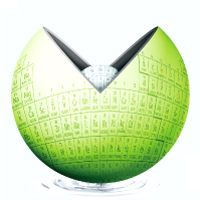
Published for geochemistry community from Geochemical Society of Japan.
Microbial carbon isotope fractionation to produce extraordinarily heavy methane in aging hydrothermal plumes over the southwestern Okinawa Trough
Geochemical Journal, Vol. 44, No. 6, P. 477-487, 2010
ABSTRACT
Within neutrally buoyant hydrothermal plumes derived from the Yonaguni Knoll IV hydrothermal field (24°51´ N, 122°42´ E, D = 1,370-1,385 m) in the southwestern Okinawa Trough back-arc basin, we obtained profiles of dissolved manganese (Mn), helium isotopes (3He/4He), methane (CH4) and its stable carbon isotope ratio (δ13CPDB) in young to old plume waters. We first mapped the spatial distribution of hydrothermal plumes by towing a fixed array of optical sensors (Miniature Autonomous Plume Recorders: MAPRs) above the field. We then made water column observations and samplings using a CTD (Conductivity, Temperature, and Depth sensors)-Carousel package with a transmissometer and Niskin-X bottles at five locations, with distances between 0.6 and 6.1 km from the hydrothermally active center so far discovered. Vertical profiles of light transmission and chemical tracers indicated triple-layered plumes, the centers of which were at depths of 700-800 m, ∼1,050 m and ∼1,200 m. The CH4 concentrations and δ13C values for the 1,200-m plume ranged between 1,026 and 10 nmol/kg, and between -22.4 and +40.4‰ (the highest δ13C value yet reported for oceanic CH4), respectively, indicating active microbial CH4 oxidation accompanied by the δ13C increase for residual CH4. The δ13C(CH4) was shown to be useful for tracing such a “microbial plume” whose CH4 concentration has already fallen to almost the background level. By applying the Rayleigh distillation equation for a closed system, we estimated the kinetic isotope fractionation factor of 1.012 for the CH4 oxidation process occurring within the hydrothermal plumes deeper than 1,000 m.KEYWORDS
hydrothermal plume chemistry, microbial methane oxidation, carbon isotope fractionation, southern Okinawa Trough- Published : 2010-12-20
- Released on J-STAGE : 2013/03/23
- Received : 2009/06/09
- Accepted : 2010/06/04
- DOI : https://doi.org/10.2343/geochemj.1.0097
- J-STAGE URL : https://www.jstage.jst.go.jp/article/geochemj/44/6/44_1.0097/_article/-char/ja
- J-Online ISSN: 1880-5973
- Print ISSN : 0016-7002
- ISSN-L : 0016-7002
All Issues
- Vol.59, 2025
- Vol.58, 2024
- Vol.57, 2023
- Vol.56, 2022
- Vol.55, 2021
- Vol.54, 2020
- Vol.53, 2019
- Vol.52, 2018
- Vol.51, 2017
- Vol.50, 2016
- Vol.49, 2015
- Vol.48, 2014
- Vol.47, 2013
- Vol.46, 2012
- Vol.45, 2011
- Vol.44, 2010
- Vol.43, 2009
- Vol.42, 2008
- Vol.41, 2007
- Vol.40, 2006
- Vol.39, 2005
- Vol.38, 2004
- Vol.37, 2003
- Vol.36, 2002
- Vol.35, 2001
- Vol.34, 2000
- Vol.33, 1999
- Vol.32, 1998
- Vol.31, 1997
- Vol.30, 1996
- Vol.29, 1995
- Vol.28, 1994
- Vol.27, 1993
- Vol.26, 1992
- Vol.25, 1991
- Vol.24, 1990
- Vol.23, 1989
- Vol.22, 1988
- Vol.21, 1987
- Vol.20, 1986
- Vol.19, 1985-1986
- Vol.18, 1984
- Vol.17, 1983
- Vol.16, 1982
- Vol.15, 1981
- Vol.14, 1980
- Vol.13, 1979
- Vol.12, 1978
- Vol.11, 1977
- Vol.10, 1976
- Vol.9, 1975
- Vol.8, 1974
- Vol.7, 1973
- Vol.6, 1972-1973
- Vol.5, 1971
- Vol.4, 1970-1971
- Vol.3, 1969-1970
- Vol.2, 1968
- Vol.1, 1966-1967
Current Issue:
Stats:
Impact Factor: 1.6 (2024)
Submission to final decision: 9.6 weeks (2022)




